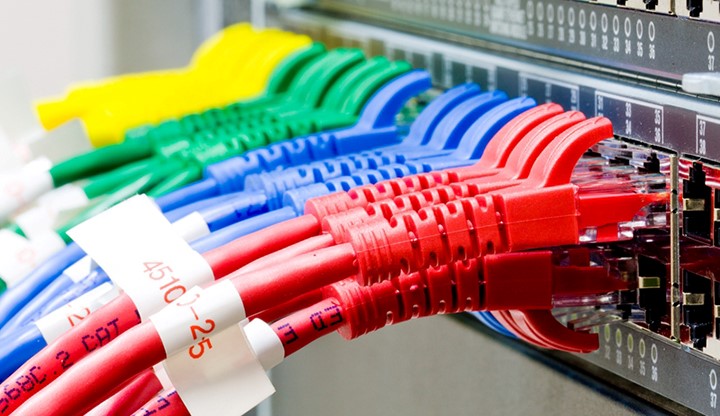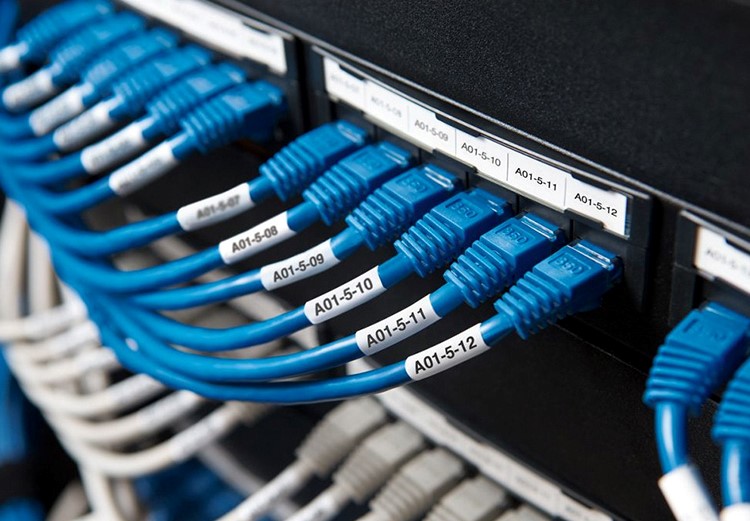Change in wiring is commonplace in data centers. Because of the demand for higher bandwidth speeds and the installation and updating process of cables and components. Network Ethernet cable labels are considered as a critical part in data center network cable management. Network Ethernet allows for easier identification and quicker isolation of cables. Meanwhile, a properly labeled cabling system could benefit installers with increased efficiency, profitability and reliability. This article will focus on the benefits of network Ethernet cable labels and how to effectively label your cables.
Benefits of Network Ethernet Cable LabelsLabeling cables at each end are quite essential, especially when there is a problem. In this case, the cable can be simply identified. By doing so, Network Ethernet cable labels help to reduce the time taken to track down and resolve an issue. Besides, labeling the SFP cable to power source ensures that you are capable of tracing cables to a power source. So it makes equipment upgrades or replacements easier.
Here are the main benefits of proper and reliable Ethernet cable labeling system:
- Increased Productivity—Simpler troubleshooting and maintenance procedures. It saves repair and movement requirements (both time and costs). You can keep downtime to a minimum. And operations run smoothly by being able to track cables, wires and components at-a-glance.
- Improved Profitability—With the right planning and labeling, you make the job easier and more efficient for your workers, more professional-looking for your customers. And in return, more profit for your operations.
- Heightened Safety and Security—Along with efficiency, convenience, and clarity, it can be used to keep your workplace more secure and more compliant.
Network Ethernet Cable Labels SolutionsThere are a wide variety of labels and makers out there. They are available to help ease your labeling work. Some of the most commonly used ones are shown in the following parts.
Cable Tags A cable tag typically consists of a tie. The tie loops around cables (or cable bundles) with a tag on the end. The tags are used to identify the cable. These tags allow for an easily readable, highly visible flat surface to clearly show the ID. Tags are widely adopted for labeling, ranging from the networking and electrical fields to home-use.
Wire MarkersWire markers are used to wrap around the cable. They typically have an identifying mark, usually a number or a color. This allows you to easily identify a cable at a glance. The numbers and colors of wire marker simplify the labeling process. Because it is hard to read the longer text around the surface of a thin wire. Wire markers can be a plastic expandable ring that clips around a single cable. Because of the fact that they aren’t large enough to accommodate bundles.
Heat Shrink LabelsThese Labels fit around cables, then shrink to conform to the size and shape of the cable via application of heat. This creates a snugly fit label around wires and cables that won’t peel or slip off. Besides they can be used in a wide variety of environmental conditions. So, for an application that needs to be long-lasting and withstand tough environmental conditions, sleeves may be preferable to typical adhesive wire markers.
Considerations for Buying Network Ethernet Cable LabelsLabeling cables is not a difficult job, but it is time-consuming. Because you need to be patient enough. When selecting the label for your cable identification needs, there are at least three factors that need to be considered.
Label material: There are various options when it comes to label material. It depends on your specific applications and environment. Polyolefin labels are used for wet environment and resistant to chemical and high temperatures. Vinyl labels are ideal for non-flat sub surfaces since they offer oil and dirt resistance. While nylon is the good choice for the use on curved surfaces due to their flexible and strong features.
Cable thickness: Depending on the thickness of your wires or cables, you need to decide which sleeves or self-laminating labels to use. Because you need to make sure they’ll fit. Generally, cable sleeves should have at least twice the height of the cable diameter. Besides they are very thick cables so that they can be identified using straps and a cable bundle tag.
Cable Types: If you want to limit the contact surface between your wire or cable and your label, you can use a P- or T-shaped flag label. So you can leave space for printing a code or bar-code on. When you need to identify cables or wires that are already attached, tags can be used as a non-adhesive alternative. Besides wraparounds and flag labels are a self-adhesive alternative for terminated cables.
ConclusionProperly-labeled wires and cables contribute to facilitating data center management. It offers immediate insight into how your network operates as well as aesthetic appeal. In a good cable labeling system, you can install and upgrade your infrastructure in a more secure and cost-effective way. So never underestimates the value of network Ethernet cable labels.

